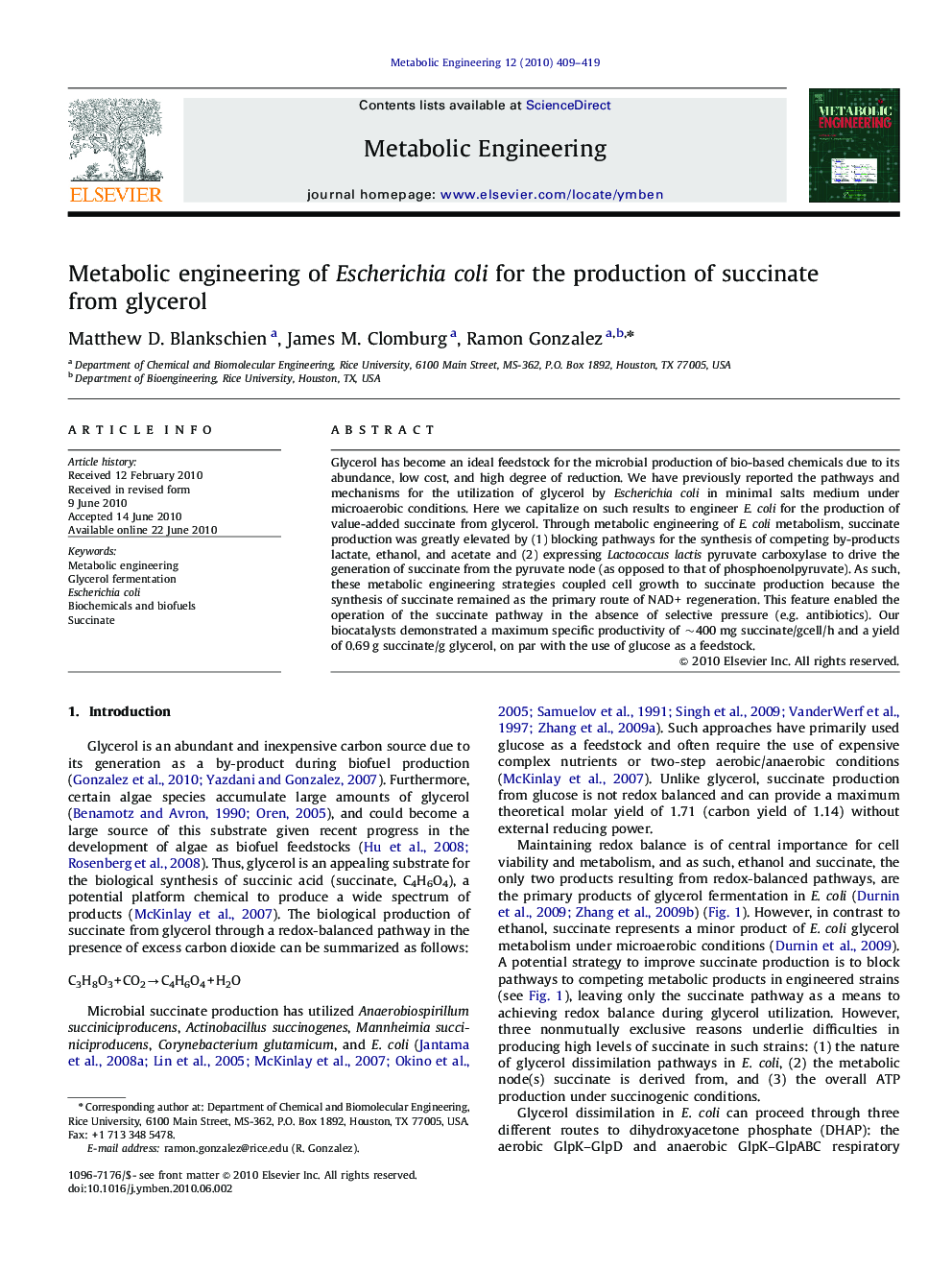| Article ID | Journal | Published Year | Pages | File Type |
|---|---|---|---|---|
| 31679 | Metabolic Engineering | 2010 | 11 Pages |
Glycerol has become an ideal feedstock for the microbial production of bio-based chemicals due to its abundance, low cost, and high degree of reduction. We have previously reported the pathways and mechanisms for the utilization of glycerol by Escherichia coli in minimal salts medium under microaerobic conditions. Here we capitalize on such results to engineer E. coli for the production of value-added succinate from glycerol. Through metabolic engineering of E. coli metabolism, succinate production was greatly elevated by (1) blocking pathways for the synthesis of competing by-products lactate, ethanol, and acetate and (2) expressing Lactococcus lactis pyruvate carboxylase to drive the generation of succinate from the pyruvate node (as opposed to that of phosphoenolpyruvate). As such, these metabolic engineering strategies coupled cell growth to succinate production because the synthesis of succinate remained as the primary route of NAD+ regeneration. This feature enabled the operation of the succinate pathway in the absence of selective pressure (e.g. antibiotics). Our biocatalysts demonstrated a maximum specific productivity of ∼400 mg succinate/gcell/h and a yield of 0.69 g succinate/g glycerol, on par with the use of glucose as a feedstock.
